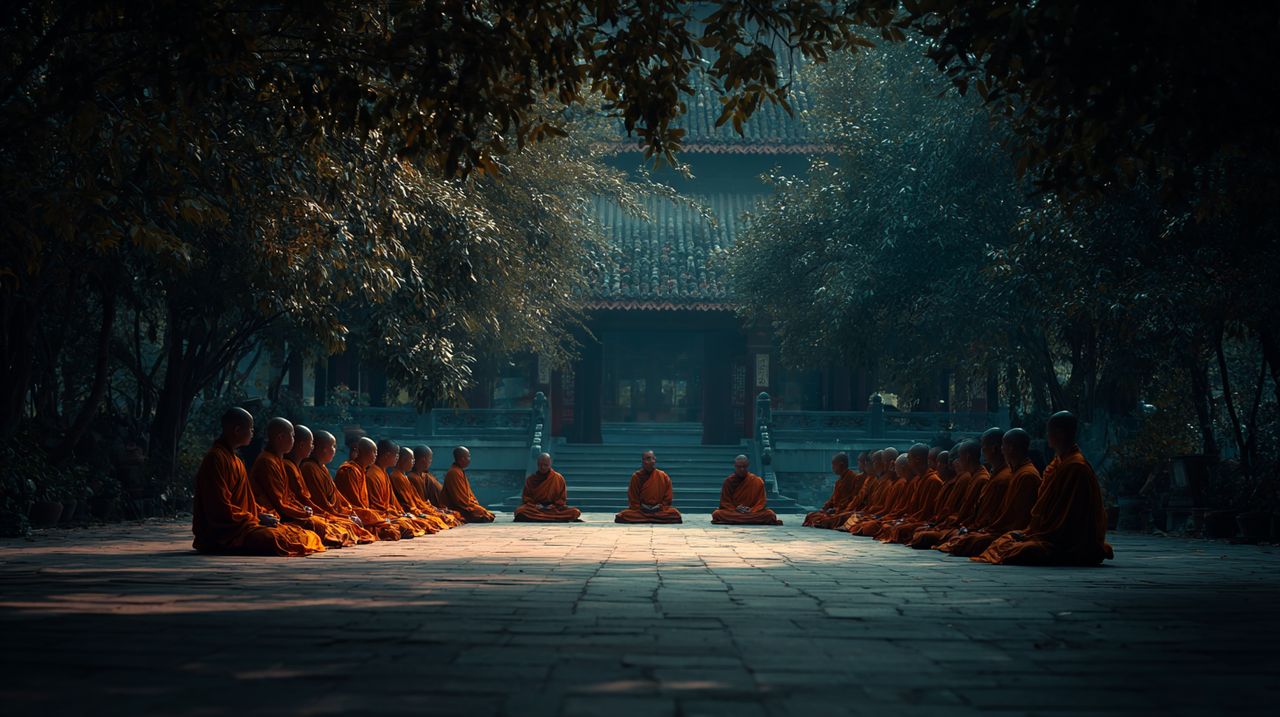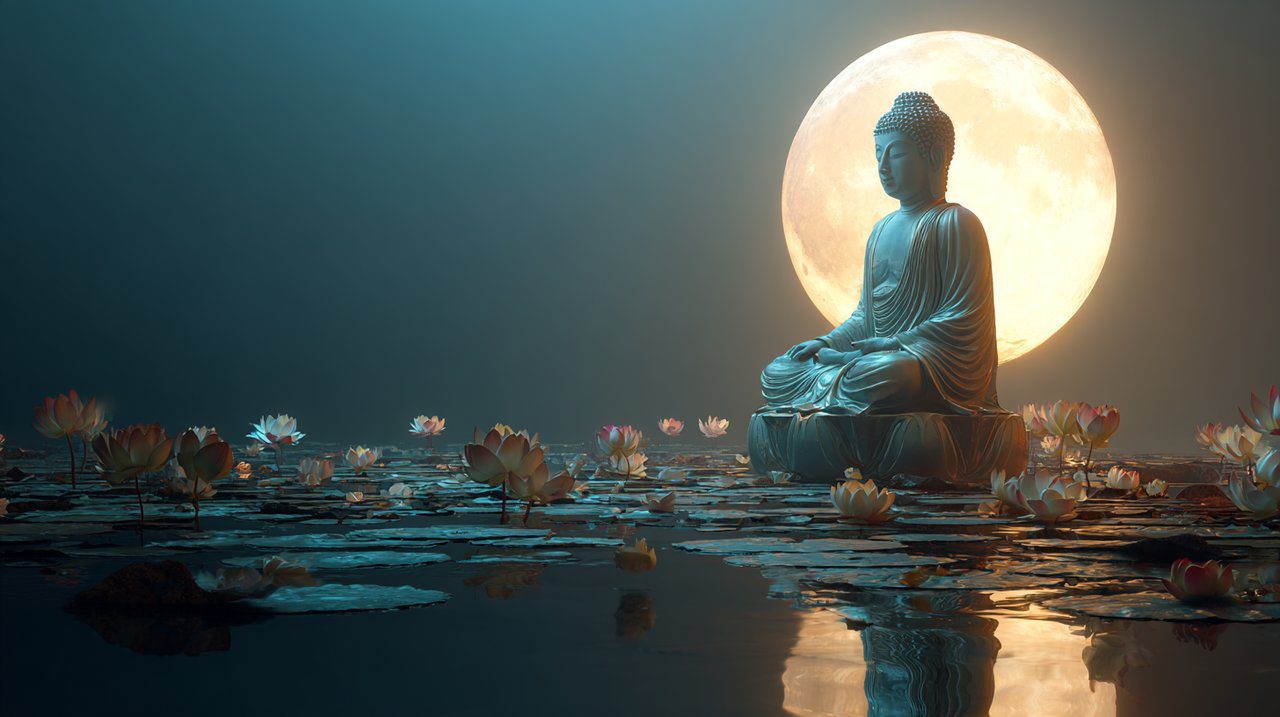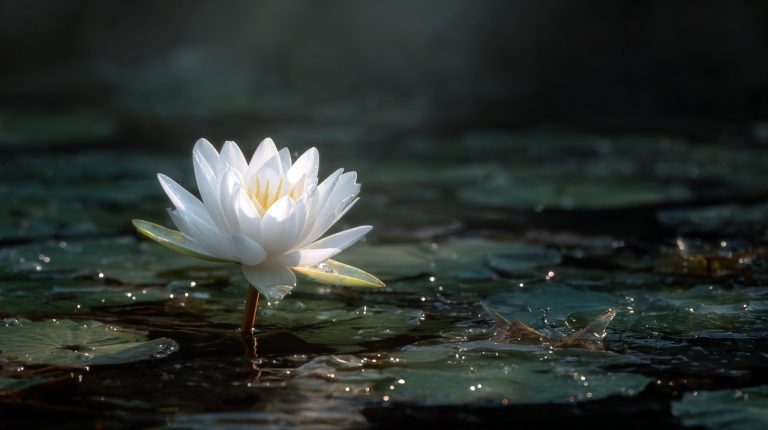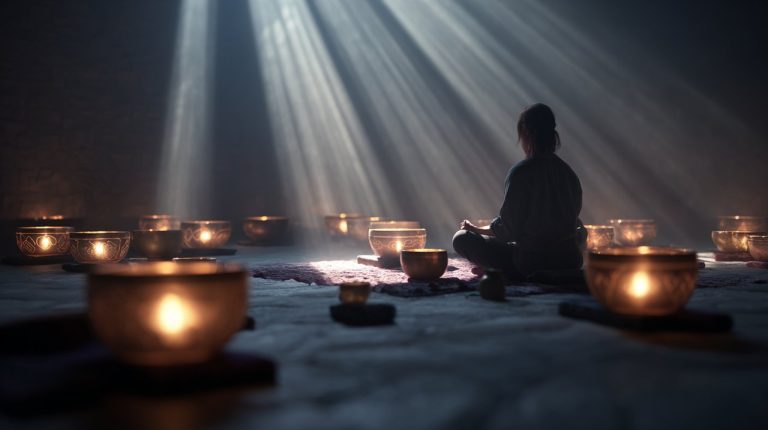Buddhist Calendar 2025: All Major Holidays, Dates, and Their Significance Explained
Just as a mountain stream finds its unwavering path through stone, our spiritual journey, too, unfolds in cycles. For those who walk the path of the Dharma, the Buddhist calendar is more than a mere sequence of days. It is a series of markers, much like observing the subtle shifts in the wind or the phases of the moon, offering invitations for reflection and practice.
These annual milestones resonate with the journey to awakening. Each festival acts as a point of profound insight, a living map where we might discern a crucial aspect of our individual paths. Many seek to understand these sacred days, to forge a connection between their daily lives and these ancient traditions. Perhaps, by observing them, we can find new avenues for inner growth, understanding that true wisdom often reveals itself in the rhythms of time.
As we contemplate these spiritual waypoints, we might also consider the rich tapestry of Buddhist symbolism. For instance, the eight auspicious symbols often found in temples and homes, each offer a distinct facet of the Dharma’s profound blessings and teachings.
Magha Puja (Sangha Day): February 12, 2025
Origins and the Sangha’s Unity
Imagine a cluster of ancient trees, their roots intertwining beneath the earth, each drawing strength from the shared soil. Magha Puja, often called Sangha Day, commemorates a remarkable event when 1,250 enlightened disciples spontaneously gathered before the Buddha, without prior arrangement, like leaves drawn together by an unseen current.

On that full moon day, the Buddha delivered the "Ovadapatimokkha," a summary of his teachings emphasizing:
- Patience (khanti) as the highest ascetic practice.
- Non-violence (ahimsa) towards all beings.
- The purification of one’s mind (citta parisuddhi).
This discourse underscores the profound significance of the Sangha – the community of practitioners – as a precious jewel of refuge. It calls us to reflect on the invaluable support found within a spiritual community.
Shared Practice and Reflection
While some traditions mark this day with circumambulation around stupas or offerings to monastics, the essence of Magha Puja lies in appreciating the collective strength and wisdom of the Sangha. It is an invitation to acknowledge those who walk this path alongside us, recognizing that a shared journey can deepen our resolve and understanding. The interdependence of the Sangha mirrors the interconnectedness of all life, much like individual raindrops contributing to the vastness of an ocean.
Parinirvana Day: February 15, 2025
Impermanence and Liberation
A leaf, having fulfilled its purpose, gently detaches from its branch, completing its cycle and returning to the earth. Parinirvana Day marks the Buddha’s passing into final nirvana, a state utterly free from suffering and rebirth. This observance serves as a powerful meditation on impermanence (anicca), akin to watching the tide gracefully ebb away, revealing the liberation possible through diligent adherence to the Dharma.
The Buddha’s final teachings, as recorded in the Mahaparinirvana Sutra (Digha Nikaya 16 of the Pali Canon), famously urged his disciples: "All conditioned things are subject to decay. Strive with diligence." This is not a message of sorrow, but a profound reminder of the preciousness of our human journey and the urgency of our practice.
Diligence and Compassion
This day encourages a deeper understanding of life’s cycles and the transient nature of all phenomena. It is a moment for focused meditation, perhaps revisiting the sutras that chronicle the Buddha’s final days, or engaging in acts of compassion. Many use this day to renew their commitment to the path, recognizing that every breath offers an opportunity to cultivate mindfulness and wisdom. Even the greatest of beings demonstrate the changing nature of existence, urging us to find stability not in external forms, but in the unwavering core of our practice.
Losar (Tibetan New Year): February 27, 2025
Cleansing and New Beginnings
When winter’s stillness gracefully yields to spring, the earth sheds its old coat, preparing for a fresh burst of life. Losar, the Tibetan New Year, embodies this spirit of new beginnings, offering a chance to thoughtfully clear away what no longer serves us. Rooted in both ancient Bön traditions and Buddhist principles, it is a time for families to gather, cleanse their homes, offer simple gifts, and share blessings for prosperity.
With Losar, the animal sign of the chinese zodiac shifts, ushering in a distinct new energy for the year ahead. In the days leading up to the new year, Tibetans engage in thorough cleaning, discard old items, and settle debts, much like the rain washing clean the leaves – a gentle shedding to welcome renewed vitality. Some also wear a red string bracelet meaning protection and good fortune for the coming cycle.
Setting Intentions and Community
On Losar itself, sincere prayers are offered for well-being and the flourishing of the Dharma. For those on the spiritual path, it is a poignant moment to set new intentions for practice, recognizing the natural cycles of time and the boundless opportunities for growth. This period of renewal is a testament to the enduring spirit of community and the collective hope for a harmonious future.
Avalokiteshvara’s Birthday (Guan Yin’s Birthday): March 19, 2025
The Boundless Flow of Compassion
A spring of water, flowing ceaselessly and without expectation, nourishes everything it touches. This day celebrates Avalokiteshvara, the Bodhisattva of Compassion, revered in China as Guan Yin. This Bodhisattva is said to hear the cries of all beings, embodying a compassion as boundless and pervasive as the sky itself.
The observance of this day reminds us of the Bodhisattva ideal: to pause at the threshold of nirvana, extending aid so that all may discover their own path to freedom. It is an invitation to awaken that gentle, yet potent, wellspring of compassion within our own hearts. In Tibetan Buddhism, Avalokiteshvara is known as Chenrezig, and practitioners often recite the mantra "Om Mani Padme Hum" to invoke this boundless compassion.
Embodying the Bodhisattva Ideal
Many visit temples, offer incense, or choose vegetarian meals as an act of non-harming. We might perform small acts of kindness, engage in loving-kindness (metta) meditation, or simply reflect on the suffering around us, considering how we might offer a helping hand. The steady flow of Avalokiteshvara’s compassion, like a river carving its way through the landscape, reminds us that even seemingly small acts can profoundly shift the contours of the heart and the world.
Vesak (Buddha Purnima): May 12, 2025
The Triple Commemoration
The full moon, radiant and complete, casts its light equally upon all. Vesak, or Buddha Purnima, commemorates three pivotal moments in Gautama Buddha’s journey: his birth, his awakening (enlightenment), and his passing (Parinirvana) – all traditionally said to have occurred under the May full moon. This day is a profound celebration of the enlightened path he illuminated.
It is a day for deep contemplation and a renewal of our personal commitment to the Dharma. Across diverse traditions, people gather to honor these significant milestones that illuminate the way to awakening. Many engage in the symbolic "bathing of the Buddha" ceremony, pouring fragrant water over a Buddha statue as a reminder to cleanse one’s own mind of impurities.

Awakening Through Practice
"What you are is what you have been. What you will be is what you do now."
We might visit temples, offer flowers or light candles, listen to Dharma talks, or extend kindness to others. Many choose vegetarian meals as an act of compassion. Vesak underscores that the possibility of awakening resides within each of us, like a seed awaiting the right conditions to sprout. Through diligent practice and compassion, we nurture that seed, understanding that each mindful step contributes to our unfolding freedom. To delve deeper into these foundational teachings, exploring various Buddha Teachings Books: The Ultimate Guide to Spiritual Growth & Inner Peace can offer invaluable guidance.
Dharma Day (Asalha Puja): July 9, 2025
Turning the Wheel of Dharma
After a long, parched silence, the first rain falls, nourishing the dry earth and awakening new life. Dharma Day, or Asalha Puja, marks the Buddha’s first teaching after his awakening, delivered to five ascetics in Sarnath’s Deer Park. This seminal discourse, known as the "Dhammacakkappavattana Sutta" (The Setting in Motion of the Wheel of Dharma), laid the foundation of Buddhism.
In this address, the Buddha expounded the Four Noble Truths – suffering, the origin of suffering, the cessation of suffering, and the path to the cessation of suffering – and the Eightfold Path. This event signifies the profound beginning of Buddhism as a path to liberation, with the Dharma now accessible to all who seek it.
Reconnecting with Core Teachings
This day invites us to reconnect with these fundamental teachings. We might gather to listen to Dharma talks, read the suttas, or meditate on the Four Noble Truths, which reveal the nature of suffering and the path to its cessation. It is a time to deepen our understanding of these guiding principles, knowing that a clear comprehension, lived out each day, can lead to genuine insight and inner peace. This pivotal moment, when the Buddha first shared his wisdom, forever altered the spiritual landscape.
Ulambana (Filial Piety / Hungry Ghost Festival): August 8, 2025
Interconnectedness and Ancestral Care
Imagine the vast, unseen network of roots beneath a forest floor, connecting every tree and plant in an intricate web of life. Ulambana, primarily a Mahayana Buddhist festival, is rooted in the profound care for our elders and a compassion that extends to all beings, especially those experiencing suffering. It emphasizes the deep interdependence that binds us all.
The tradition originates from the Ullambana Sutra, recounting the story of Maudgalyayana, a prominent disciple of the Buddha. Through his wisdom and the collective strength of the Sangha, Maudgalyayana was able to alleviate the suffering of his mother, who had been reborn as a hungry ghost. This festival reminds us of our deep interconnectedness, like a single breath shared by all, and the importance of extending our compassion beyond our immediate circles.
Extending Compassion to All Beings
It is a day for offering gifts to monastics, dedicating thoughts to ancestors and those who have passed, and performing acts of generosity for those in need. These actions generate merit, which can then be transferred to alleviate the suffering of others. Ulambana encourages us to reflect on our lineage and the subtle ties that bind us, demonstrating how our actions can bring ease not only to ourselves but to countless others. It is a powerful expression of universal compassion.
Pavarana Day (End of Vassa): October 8, 2025
The Monastic Retreat and Self-Correction
After a season of abundant rain, the earth breathes a sigh of release and renewal. Pavarana Day marks the culmination of Vassa, the three-month rainy season retreat observed by Buddhist monastics. During Vassa, monastics remain in one place, much like a seed quietly germinating, dedicating themselves to intensive meditation and study.
Pavarana, meaning "invitation," is a unique ritual where monastics openly ask their peers to point out any missteps or faults from the retreat period. This practice fosters profound honesty, humility, and clarity within the Sangha, embodying a spirit of continuous self-improvement and mutual support.
Humility and Ethical Cultivation
For lay practitioners, Pavarana offers an opportunity to extend support, perhaps by providing new robes or other essential needs during the subsequent Kathina ceremony. It is also a time for personal reflection on one’s own conduct, a chance to seek forgiveness or make amends. This tradition highlights the inherent strength of self-correction and the steady effort required to walk an ethical path toward awakening, reminding us that humility is the fertile ground upon which all genuine growth stands.
Lhabab Duchen: November 11, 2025
Descent from Tushita Heaven
Imagine the sun, momentarily obscured by clouds, then breaking through with renewed brilliance to warm the earth once more. Lhabab Duchen is a significant Tibetan Buddhist festival celebrating the Buddha’s descent to earth from the Tushita heaven. Tradition recounts that after teaching Dharma to his mother, Maya Devi, who had been reborn there, the Buddha returned to the human realm.
This event is revered as one of the Buddha’s eight great acts and is observed with deep devotion, as any virtuous action performed on this day is believed to carry multiplied merit. It is a powerful reminder of the Buddha’s immense compassion and his unwavering commitment to bring liberation to all beings.
Amplified Merit and Dedicated Practice
Practitioners often engage in various spiritual activities: circumambulating stupas, offering gifts, reciting prayers, or dedicating themselves to meditation. The spiritual atmosphere on this day feels particularly clear, inviting a deepening of one’s personal practice. Many utilize a tibetan mala necklace to count their mantra recitations, focusing their dedication for the benefit of all. It is a profound affirmation of the path and the guiding wisdom that illuminates our way.
The Rhythm of Awakening
Just as the earth revolves and the seasons naturally cycle, so too does our spiritual path unfold. These dates in the Buddhist calendar are not mere markers of time; they are like the changing light filtering through a forest, each offering a distinct way to perceive and engage with the Dharma.
They invite us to reflection, dedicated practice, and profound inner growth. The turning of these observances mirrors the steady, persistent effort required on our path. Like a relentless stream carving its way through solid rock, consistent dedication and perseverance can lead to a profound transformation. The enduring strength of koi fish, swimming against the current, perfectly symbolizes this patient and resolute journey.

When we understand and engage with these sacred days, we allow the timeless wisdom of Buddhism to gently permeate our daily lives. Perhaps you might choose one or two festivals this year that resonate deeply with you, exploring their meaning through personal practice, or simply through mindful observation. Let each sacred day serve as a reflective stepping stone, guiding you toward the inner peace and profound understanding that the Dharma offers.
💡 Pertanyaan yang Sering Diajukan
Magha Puja, also known as Sangha Day, is observed on February 12, 2025. It commemorates a significant gathering of 1,250 enlightened disciples before the Buddha, without prior arrangement. The day emphasizes the value of the Sangha, or the community of practitioners, and encourages reflection on the support found within spiritual communities.
Parinirvana Day, observed on February 15, 2025, marks the Buddha's passing into final nirvana, a state free from suffering and rebirth. It is a time for reflection on impermanence, the liberation possible through the Dharma, and the importance of diligent practice. It encourages a deeper understanding of life's cycles and the preciousness of the human journey.
Losar, the Tibetan New Year, falls on February 27, 2025. It celebrates new beginnings and is a time for families to gather, clean their homes, offer simple gifts, and share blessings. It's associated with the shifting of the Chinese zodiac animal sign and encourages clearing away what no longer serves us, setting new intentions for Dharma practice, and recognizing natural cycles.
Vesak, also known as Buddha Purnima, is observed on May 12, 2025, under the full moon. It commemorates three significant events in Gautama Buddha's life: his birth, his awakening (enlightenment), and his passing into final nirvana. The day is for quiet contemplation and renewal of one's spiritual path.
Dharma Day, or Asalha Puja, on July 9, 2025, marks the Buddha's first teaching after his awakening in Sarnath's Deer Park. This discourse introduced the Four Noble Truths and the Eightfold Path, signifying the beginning of Buddhism as a path of freedom open to all. The day invites reconnection with these core teachings.








